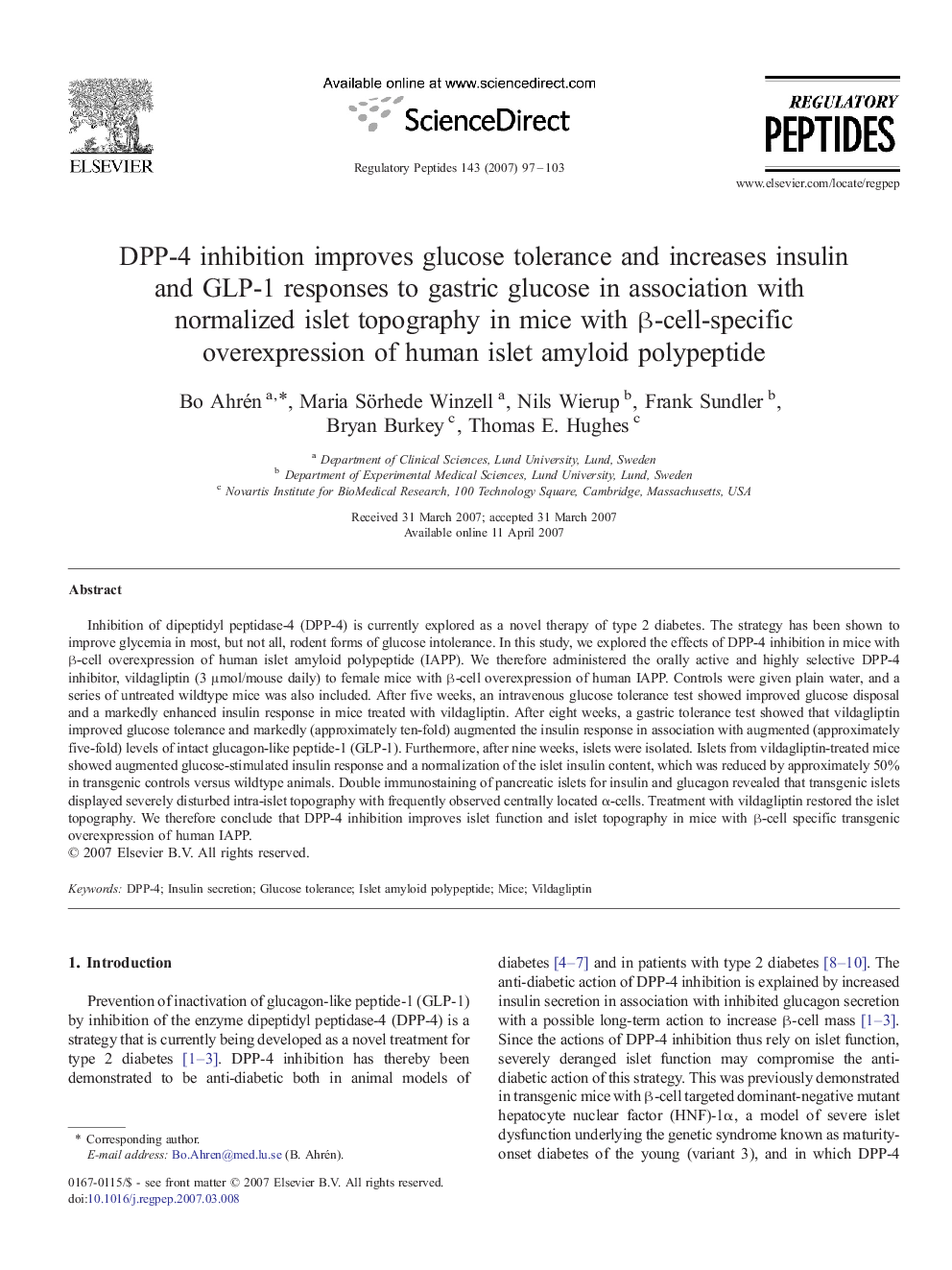| Article ID | Journal | Published Year | Pages | File Type |
|---|---|---|---|---|
| 2023205 | Regulatory Peptides | 2007 | 7 Pages |
Inhibition of dipeptidyl peptidase-4 (DPP-4) is currently explored as a novel therapy of type 2 diabetes. The strategy has been shown to improve glycemia in most, but not all, rodent forms of glucose intolerance. In this study, we explored the effects of DPP-4 inhibition in mice with β-cell overexpression of human islet amyloid polypeptide (IAPP). We therefore administered the orally active and highly selective DPP-4 inhibitor, vildagliptin (3 μmol/mouse daily) to female mice with β-cell overexpression of human IAPP. Controls were given plain water, and a series of untreated wildtype mice was also included. After five weeks, an intravenous glucose tolerance test showed improved glucose disposal and a markedly enhanced insulin response in mice treated with vildagliptin. After eight weeks, a gastric tolerance test showed that vildagliptin improved glucose tolerance and markedly (approximately ten-fold) augmented the insulin response in association with augmented (approximately five-fold) levels of intact glucagon-like peptide-1 (GLP-1). Furthermore, after nine weeks, islets were isolated. Islets from vildagliptin-treated mice showed augmented glucose-stimulated insulin response and a normalization of the islet insulin content, which was reduced by approximately 50% in transgenic controls versus wildtype animals. Double immunostaining of pancreatic islets for insulin and glucagon revealed that transgenic islets displayed severely disturbed intra-islet topography with frequently observed centrally located α-cells. Treatment with vildagliptin restored the islet topography. We therefore conclude that DPP-4 inhibition improves islet function and islet topography in mice with β-cell specific transgenic overexpression of human IAPP.
